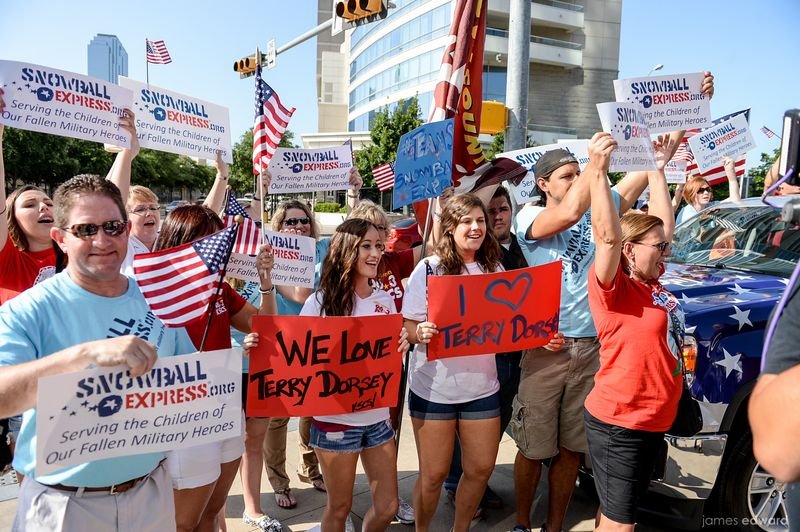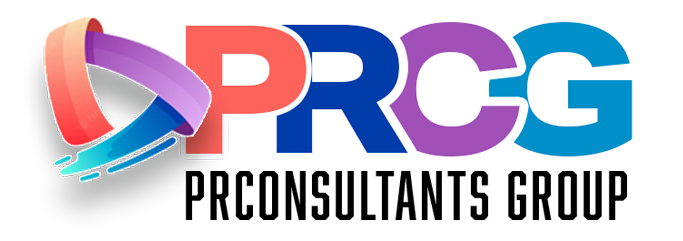Brands are in a constant state of competition—not just for market share but for attention, trust and loyalty. That competition isn’t being fought in a single ad, platform or content type. It’s happening across every touchpoint. And the brands that win? They’re the ones that masterfully connect the dots across all those touchpoints through unified, cohesive and impactful storytelling.
That’s the power of integrated marketing campaigns. These campaigns align message, tone, visuals and timing across all marketing channels—owned, earned, paid and shared media—to deliver an intentional, memorable and trust-building brand experience.
What was once considered a “best practice” is now a business imperative.
Why Integration Now?
The rise of multi channel engagement and the shift in how consumers research and interact with brands has raised expectations. Today’s customers don’t see your media channels as silos—they see one brand. And if your touchpoints feel inconsistent, confusing or out of sync, they lose interest.
Integration solves that.
An integrated marketing strategy gives your brand one cohesive voice across multiple channels, one unified narrative across departments and one shared set of metrics that tracks performance in a way that truly supports business outcomes.
This is where traditional marketing falls short. It’s not enough to “be on social” or “send a newsletter.” Success lies in the ability to orchestrate all your efforts in sync—something only integrated marketing campaigns can deliver.
What Is an Integrated marketing Campaign?
At its core, an integrated marketing campaign is a unified effort to communicate a brand message across all relevant platforms in a way that aligns with your brand’s visual identity, voice, values and strategic goals.
These campaigns incorporate:
Email marketing that matches what’s being said on social media
Social media posts that support your latest paid media push
Owned content (like blogs, videos or whitepapers) that’s reflected in your media relations efforts
Earned media that links back to high-value landing pages or downloadable resources
Paid campaigns that amplify high-performing content from all channels
When all those tactics are executed around a common narrative, the result is consistent branding and stronger customer connections.
Why Consistent Messaging Matters More Than Ever
The average person encounters up to 10,000 brand messages a day. That might sound like an exaggeration—until you consider every ad, label, headline, social feed, push notification, podcast pre-roll and email subject line competing for attention.
In that environment, only one thing cuts through: consistent messaging that creates mental availability.
When your brand message is aligned across all marketing channels, customers are more likely to recognize, remember and trust your brand. You stop being noise—and start being the signal they’re looking for.
Multi Channel vs. Omnichannel vs. Integrated: What’s the Difference?
Let’s clear up a common confusion:
Multi channel marketing means using more than one channel (e.g., you have a website, an email list and social media accounts).
Omnichannel marketing focuses on delivering a seamless experience across all platforms—typically in ecommerce environments.
Integrated marketing communication connects the dots between strategy, messaging and execution across all of these touchpoints.
A multi channel plan says, “We’re showing up.”
An omnichannel plan says, “We’re making it seamless.”
An integrated marketing communication plan says, “We’re making it meaningful, measurable and strategic.”
How to Build an Integrated marketing Campaign
Here’s a step-by-step guide to building your next integrated marketing campaign:
1. Define the Core Message
Before you launch a campaign, get crystal clear on the single most important thing you want your audience to walk away with. This message should serve as the north star for all content, creative and communications.
Ask yourself:
What’s the one idea that should come across in every interaction?
Is this message aligned with our brand’s voice, tone and values?
Does it support both our short-term campaign goal and long-term brand equity?
For example, if you're launching a new service, your core message might be:
“[Product] empowers small businesses to scale with less stress.”
Everything else—blogs, emails, ads, videos—should echo and reinforce this central promise.
Pro Tip: Use this message as the starting point in all briefing documents and creative kickoffs.
2. Align Around a Big Idea
The “big idea” is not the slogan. It’s the emotional or conceptual framework that makes your campaign memorable and relevant. It’s the thematic hook that ties everything together.
Your big idea should:
Tap into an audience belief, behavior or cultural moment
Elevate your product or message beyond functional benefits
Spark internal alignment among your team
Example: For a health brand launching a wellness app, the big idea might be:
“Health isn’t a destination—it’s a relationship.”
This positioning gives your team narrative direction and storytelling flexibility across multiple channels, while making sure everyone is rowing in the same direction.
3. Map the PESO Model
Every campaign should intentionally use the four types of media: Paid, Earned, Shared and Owned (Also known as The PESO Model©, developed by Gini Dietrich) . This framework allows you to diversify your reach and multiply your message impact.
➤ Paid Media
Ads, sponsored content, boosted posts. Use this to expand reach quickly and target specific audience segments.
➤ Earned Media
PR placements, podcast interviews, analyst endorsements. Use this for third-party validation and credibility.
➤ Shared Media
Organic social content, UGC, influencer posts. Use this to engage your audience and encourage amplification.
➤ Owned Media
Blog posts, landing pages, newsletters, webinars. Use this to go deeper and drive conversion.
Map each tactic to your campaign objectives and identify how each will support the others. For example, a blog post (owned) can be used in a newsletter (owned), pitched to media (earned), boosted on LinkedIn (paid) and reshared on Facebook (shared).
4. Develop a Content Engine
You don’t need dozens of ideas—you need one great piece of content that feeds all others. That’s the power of anchor content.
Start with a high-value, high-effort asset like:
A data-backed case study
A white paper or research report
A branded video series
A webinar or expert interview
Then repurpose it across formats:
Turn stats into social infographics
Break quotes into shareable quote cards
Repurpose the narrative into blog posts, emails and PR pitches
Extract soundbites for short-form video or podcast clips
This approach keeps your campaign consistent, efficient and high-performing across multiple channels.
Pro Tip: Build a campaign asset matrix to track which content types are needed for each channel, along with production timelines.
5. Optimize for Each Channel
While your message should remain consistent, your execution should be customized. Each platform speaks a different language—your campaign should be fluent in all of them.
For example:
Your Instagram post might focus on visual storytelling with short captions.
Your LinkedIn post may emphasize thought leadership with a longer, insight-driven format.
Your email subject line should deliver value and urgency quickly.
Your press release should lead with the news angle and include compelling data.
The mistake many brands make is copying and pasting across platforms. But integrated doesn't mean identical. It means tailored storytelling that feels native, not forced.
Pro Tip: Use a brand voice and tone guide to ensure cohesion, even when formats shift.
6. Automate Where It Matters
Integration isn’t just about messaging—it’s also about operations. Using the right tools can streamline workflow, reduce human error and keep your campaign cadence consistent.
Key areas to automate:
Email marketing sequences and drip campaigns
Social media scheduling with tools like Buffer, Later or Sprout Social
Lead nurturing and segmentation in your CRM
Internal communications via Slack workflows or weekly updates
Task tracking with platforms like Asana, Trello or Monday.com
Just make sure automation never replaces human oversight. It should support strategic thinking, not stifle it.
Pro Tip: Create a master campaign calendar that integrates tasks, deadlines, approvals and launch dates in one place for cross-functional transparency.
7. Measure What Matters
Every campaign should begin with clear KPIs—and end with a full performance analysis. But don’t just track surface-level metrics. Dig deeper.
Here’s how to measure each PESO component:
PESO Element Sample KPIs
Paid CTR, CPC, ROAS, conversion rate
Earned Media impressions, brand mentions, backlinks, share of voice
Shared Engagement rate, shares, comments, UGC volume
Owned Page views, time on site, lead form completions, email open/click rates
Beyond the numbers, track qualitative signals too:
Are influencers tagging your campaign organically?
Are journalists referencing your content in coverage?
Are prospects mentioning the campaign in sales calls?
And most importantly: how did the campaign impact business outcomes?
Pro Tip: Use advanced analytics and reporting tools to create a unified dashboard that combines channel-specific data into one cohesive performance story.
The Brand Experience Starts (and Ends) With Integration
A brand experience is the sum total of every interaction someone has with your company. If that experience feels fragmented, trust erodes. If it’s seamless, your brand becomes memorable and trustworthy.
This matters whether you’re a startup or an enterprise-level operation. TrizCom PR’s integrated approach helps brands of all sizes find the structure, support and synergy they need.
Case Study Think Pink, Plan Big: How Barbie’s Marketing Team Delivered a Seamless Brand Experience
When Barbie’s marketing team launched what became one of the most successful integrated marketing campaigns of the decade to support the 2023 film release, they didn’t rely solely on trailers or paid advertising. They executed an integrated marketing campaign that was so comprehensive, it turned a single movie into a full-blown cultural moment.
The brilliance of the Barbie campaign wasn’t just in its creativity—it was in its consistency across multiple channels. Whether you were scrolling TikTok, flipping through a magazine, walking through a mall, watching morning TV or shopping online, you saw one unifying brand message: Barbie is for everyone and she’s back in a big way.
Here’s what made their campaign a textbook example of effective integrated marketing communications in action:
PR and Media Relations: Warner Bros. secured high-profile editorial coverage in Vogue, TIME, The New York Times and every major entertainment outlet. The media narrative focused not only on the film but on the feminist themes, visual style and global anticipation—giving the campaign thought leadership weight and social value.
Influencer Collaborations: Social media creators across fashion, beauty, parenting and pop culture verticals posted Barbie-inspired content for weeks. These influencers were activated strategically across Instagram, YouTube, TikTok and even LinkedIn—creating a shared message from a diverse set of voices, all reinforcing the same brand tone.
Social Media & Shared Media: Barbie memes, countdowns, behind-the-scenes reels and viral trends (like “Barbenheimer”) flooded platforms. Branded filters, challenges and hashtags created billions of organic impressions—and not one felt off-brand. It was a seamless, pink-soaked takeover.
Owned Media: The Barbie website featured custom landing pages, themed merchandise drops, educational tie-ins and behind-the-scenes interviews—all designed to drive fan engagement and capture data. Email marketing and web experiences delivered personalized content while reflecting the same visual identity seen in theaters and on social.
Paid Media: Traditional and digital advertising reinforced every message, from airport takeovers to pre-roll ads, Spotify audio spots and programmatic campaigns across streaming platforms. But it never felt disconnected from the narrative seen in organic channels—it was additive, not disruptive.
Brand Partnerships: Perhaps most impressive was the sheer volume of co-branded partnerships—from Airbnb’s Barbie Dreamhouse to collaborations with Gap, Crocs, Xbox, Ruggable and more. Each brand activated its own audience through product placement, packaging and promotions—all wrapped in a recognizable, unified look and voice.
This campaign didn’t feel like dozens of teams doing different things. It felt like one brand telling one story in many different ways. That’s the hallmark of an integrated marketing campaign: consistent messaging, platform-specific execution and a unified strategy designed to amplify—not fragment—the experience.
The takeaway for marketers? True brand momentum happens when earned media, social media, paid ads, email marketing and content strategy are aligned—not just launched.
Barbie didn’t go viral by accident. It was by design. And that design was integrated.
Integration Is the New Standard
The next time you plan a launch, a push or even a press release—ask yourself: Are all my teams, platforms and audiences speaking the same language?
Because in today’s market, fragmented messaging isn't just unproductive—it's expensive.
But integrated marketing campaigns? They’re efficient, measurable and scalable.
And they’re what TrizCom PR does best.
Need help pulling your channels together into one high-performing narrative?
Let’s build your next integrated marketing campaign together. Give us a call.
Everyone has a story. Let TrizCom PR tell yours!
About the Author:
Jo Trizila – Founder & CEO of TrizCom PR
Jo Trizila is the founder and CEO of TrizCom PR, a leading Dallas-based public relations firm known for delivering strategic communications that drive business growth and enhance brand reputations as well as Pitch PR, a press release distribution agency. With over 25 years of experience in PR and marketing, Jo has helped countless organizations navigate complex communication challenges, ranging from crisis management to brand storytelling. Under her leadership, TrizCom PR has earned recognition for its results-driven approach, combining traditional and integrated digital strategies to deliver impactful, measurable outcomes for clients across various industries, including healthcare, technology and nonprofit sectors. Jo is passionate about helping businesses amplify their voices and connect with audiences meaningfully. Her hands-on approach and commitment to excellence have established TrizCom PR as a trusted partner for companies seeking to elevate their brand and achieve lasting success. Contact Jo at jo@TrizCom.com.











































